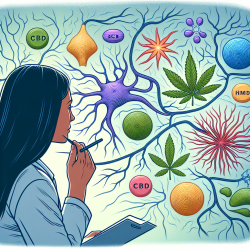In today's digital age, the presence of high-quality video and audio recordings of violent crimes is becoming increasingly common. These recordings are essential in the criminal justice system, aiding in the investigation and prosecution of crimes. However, the emotional toll on criminal justice professionals who analyze and use this potentially traumatic content is a growing concern.
A recent study titled "Workplace Trauma in a Digital Age: The Impact of Video Evidence of Violent Crime on Criminal Justice Professionals" sheds light on this issue. The research, conducted through long interviews with 16 Canadian criminal justice professionals, reveals several critical themes:
- Ubiquity of Violent Video Evidence: Video evidence is now a mainstay in many cases, leading to a significant increase in exposure to potentially traumatic content.
- Proximity to Violence: The high quality of video and audio recordings creates a new emotional proximity to violence, making it more real and impactful for viewers.
- Lack of Preparedness: Many professionals are blindsided by the graphic nature of the content, lacking adequate preparation and support to handle the emotional impact.
- Repeated Exposures: The need to repeatedly view and analyze video evidence can exacerbate the emotional toll, leading to symptoms such as nightmares, flashbacks, and increased anxiety.
- Insufficient Self-Protection: Traditional methods of compartmentalizing and distancing oneself from traumatic content are often inadequate in the face of such graphic material.
- Enduring Impact: The lasting effects of exposure to violent video evidence can lead to long-term psychological harm, including secondary trauma and PTSD.
For criminal justice professionals, the repeated and immersive nature of viewing violent video evidence can lead to significant stress and emotional distress. The study highlights the need for improved safety measures and support systems to protect the mental health of these professionals.
Here are some recommendations to mitigate the impact of exposure to violent video evidence:
- Trauma-Informed Training: Provide training that includes trauma theory and research, normalizing reactions to traumatic content, and offering strategies for managing emotional responses.
- Support Systems: Establish support systems that encourage help-seeking behavior and provide access to psychological support services.
- Boundaries and Breaks: Encourage professionals to set boundaries between work and personal life, take regular breaks, and limit exposure to graphic content.
- Use of Technology: Explore the use of machine learning and computer vision to reduce the need for human viewing of large volumes of graphic material.
By implementing these strategies, criminal justice professionals can better manage the emotional impact of their work, reducing the risk of secondary trauma and PTSD.
To read the original research paper, please follow this link: Workplace Trauma in a Digital Age: The Impact of Video Evidence of Violent Crime on Criminal Justice Professionals










